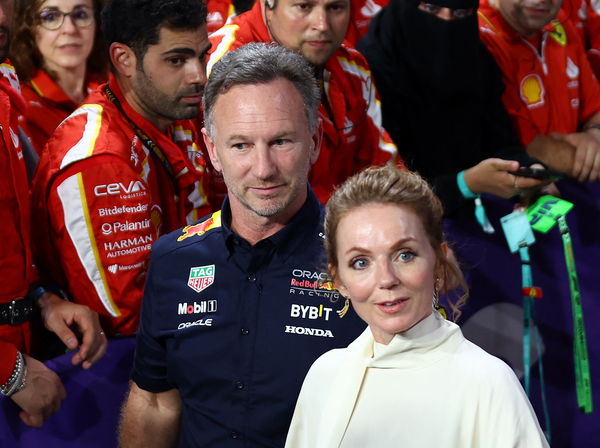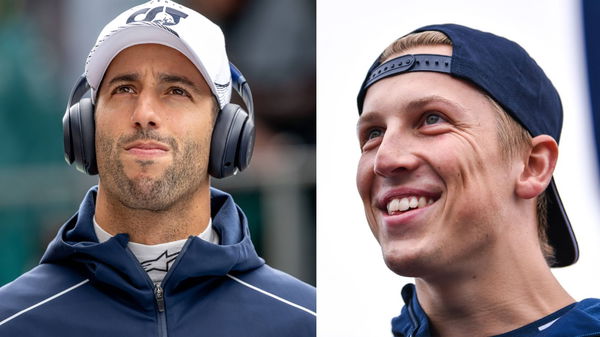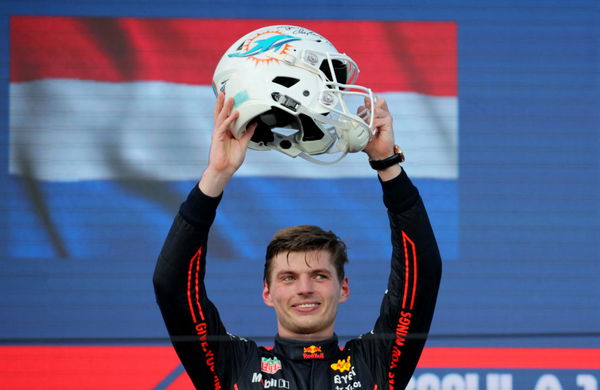Are F1 Drivers Allowed To Smoke?

Follow Us

via Reuters
Formula One F1 – Bahrain Grand Prix – Bahrain International Circuit, Sakhir, Bahrain – March 20, 2022 The drivers pose for a photo before the race REUTERS/Hamad I Mohammed
How often do we see modern-day athletes smoke? Even though the habit of smoking is relatively less in the lives of athletes from time immemorial, how often do we encounter them having a puff? Limited, or even nil to some point. Considering that with an F1 driver, that’s not a luxury they can afford.
F1 drivers are highly trained professionals. Not only do they need to put their 100% into the race week, but also they need to be fit for the race to a whole different level. The drivers have core strengths a few other professionals can match. For every driver, the core strength is very important, and that comes from the functioning of the internal organs perfectly.
ADVERTISEMENT
Article continues below this ad
It is believed that smoking damages the lungs and causes cancer. Hence, a damaged pair of lungs can be very crucial in determining a driver’s long run in the sport. A healthy driver’s heart rate is 45-50 BPM and when racing, it can even reach up to 200 BPM. So it’s very important for drivers to have healthy diets, and certainly, smoking is a big no for them.
Some drivers who smoked publicly
As the drivers have their personal preferences, some smoked in private, whereas some were public in their approach. A few big names who smoked are the seven-time world champion Michael Schumacher, James Hunt, Kimi Raikkonen, Jules Bianchi, and of course 2016 F1 World Champion Nico Rosberg and his father Keke Rosberg. Talking about their smoking, it is believed that Michael loved his cigar and Nico was quite open about it.
Trending

Liam Lawson’s Surprise Contract Clause Threatens Daniel Ricciardo’s RB Seat
April 24, 2024 11:15 AM EDT

F1 Rumor: Christian Horner and Wife Geri to Publicly Reveal All Details on Leaked Chat Scandal
April 22, 2024 04:10 PM EDT

Daniel Ricciardo To Be Replaced by Liam Lawson After Miami, F1 Pundit Dishes Out Harsh Verdict After Australian’s “Amateur Mistake”
April 17, 2024 11:14 AM EDT

Miami GP 2024: Max Verstappen Embraces the American Spirit With Helmet Design
April 23, 2024 06:15 PM EDT

Carlos Sainz Blames Charles Leclerc for Causing Fred Vasseur’s Painful Chinese GP Loss
April 21, 2024 12:23 PM EDT
Get instantly notified of the hottest F1 stories via Google! Click on Follow Us and Tap the Blue Star.

Follow Us
Among all the drivers named above, James Hunt topped the list. The 1976 Champion was a chain smoker. Seeing his other habits, we could also call him a “party animal.” Hunt was a brave, fearless, and gifted driver who used to smoke and drink even minutes before the race. Unfortunately, James died of a massive heart attack in 1993 in his native home in Great Britain.
The biggest tobacco sponsorships in F1
Interestingly, in the earlier days of motorsports, cigarette brands were popular and the biggest sponsors. Smoking back then was not only cool but also appealing. In the 1970s and 1980s, tobacco branding gripped the sport like nothing else. From brand logos showing on the cars to the uniforms and trackside advertisements, brands took over everything to gain exposure on TV. Some of the biggest brands, like Marlboro, Philip Morris, John Player, Benson and Hedges, etc, even sponsored teams.
After the World Health Organization (WHO) banned all tobacco advertising, promotion, and sponsorship, companies were forced to remove all cigarette branding. Soon after the clampdown began against these public advertisements and sponsorships, the companies started going back door.
According to the STOP (Stopping Tobacco Organizations and Products) report, British American Tobacco (BAT) paid McLaren an estimated $20 million during the 2019 season, while Philip Morris International (PMI) paid Ferrari an estimated $75 million. Ferrari continued to showcase PMI’s Mission Winnow on their car, uniform, and on boards. Meanwhile, McLaren did that with Lyft, Vype, and Vuse (BAT’s tobacco alternative products). Even in 2020, the report suggests that F1 has made more than $100 million from tobacco brands.
Is weed allowed in F1?
Even though many sports have a history of weed addiction, F1 is different. Weed or Dope are often considered performance enhancers, however, they’re the least found in F1 drivers. In fact, the Motorsports drivers under FIA are one of the least active dope users according to the reports.
Talking about this, former FIA medical delegate Dr. Gary Hartstein told the UAE’s The National in 2013. “Those guys are clean. I don’t say that because I am optimistic or naive, I say it because I was deeply involved in the FIA’s anti-doping and I know what these guys need to drive to the best of their ability. There is nothing on the prohibited list that would allow them to do that, period. And they know that.”
ADVERTISEMENT
Article continues below this ad
To be an F1 driver, one needs to have great mental and physical endurance, good concentration, muscle strength (particularly in the neck and upper body), a hefty dose of talent, and lightning-quick reaction times. And none of this would work if the drivers are too down with weed.
Why F1 doesn’t have doping scandals?
Tomas Enge, a Czech former racing driver, was sanctioned by FIA twice for doping. He is the only F1 driver to have ever failed a drugs test. Enge took part in three F1 races and that was all before he was caught in 2012 for taking banned substances. The list of banned substances includes cocaine, cannabis, etc.
ADVERTISEMENT
Article continues below this ad
WATCH THIS STORY: Most Dangerous Crashes In F1 History
Although there are multiple random drug tests throughout the season in F1, almost all the drivers pass those tests. And a lot of it has to do with the fact that if a driver consumes drugs, he not only risks his life but also the lives of other drivers and even the Marshalls that are on the track.
Edited by:
Ranvijay Singh



